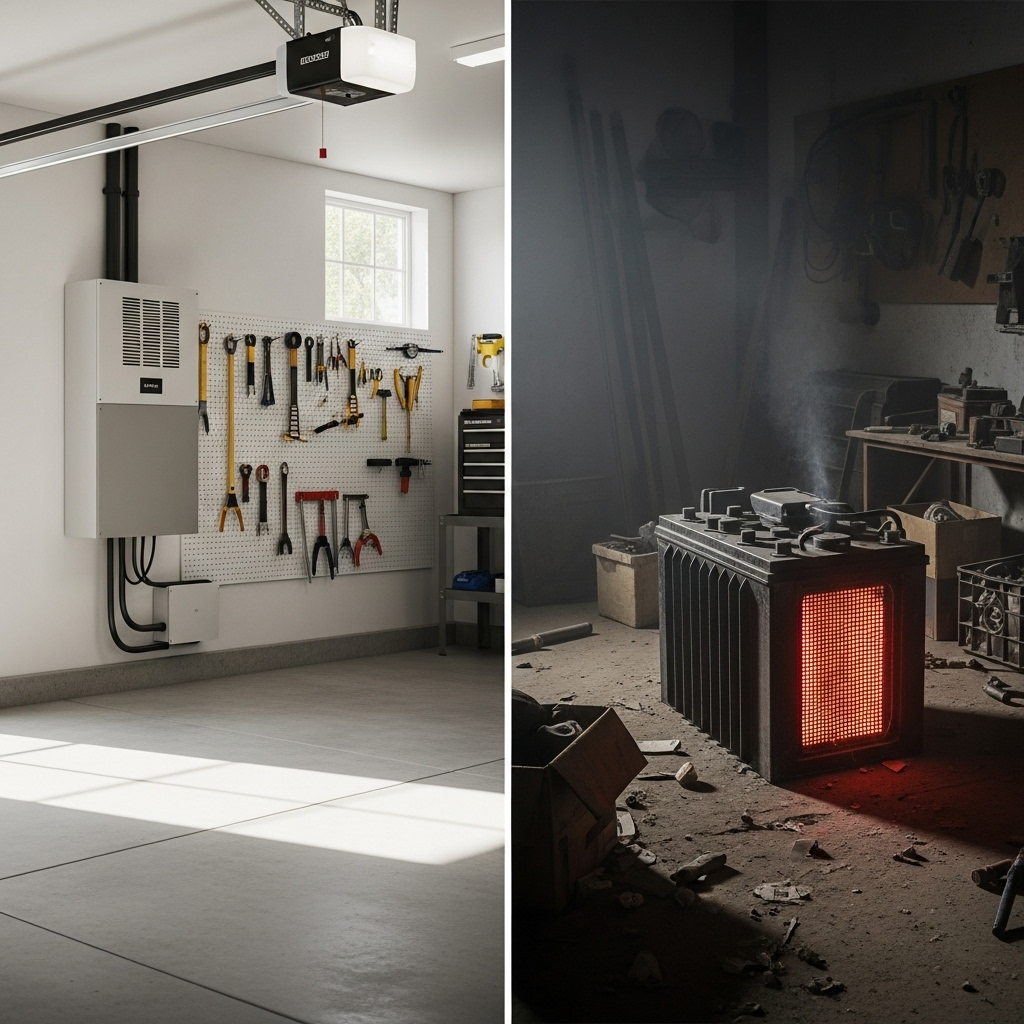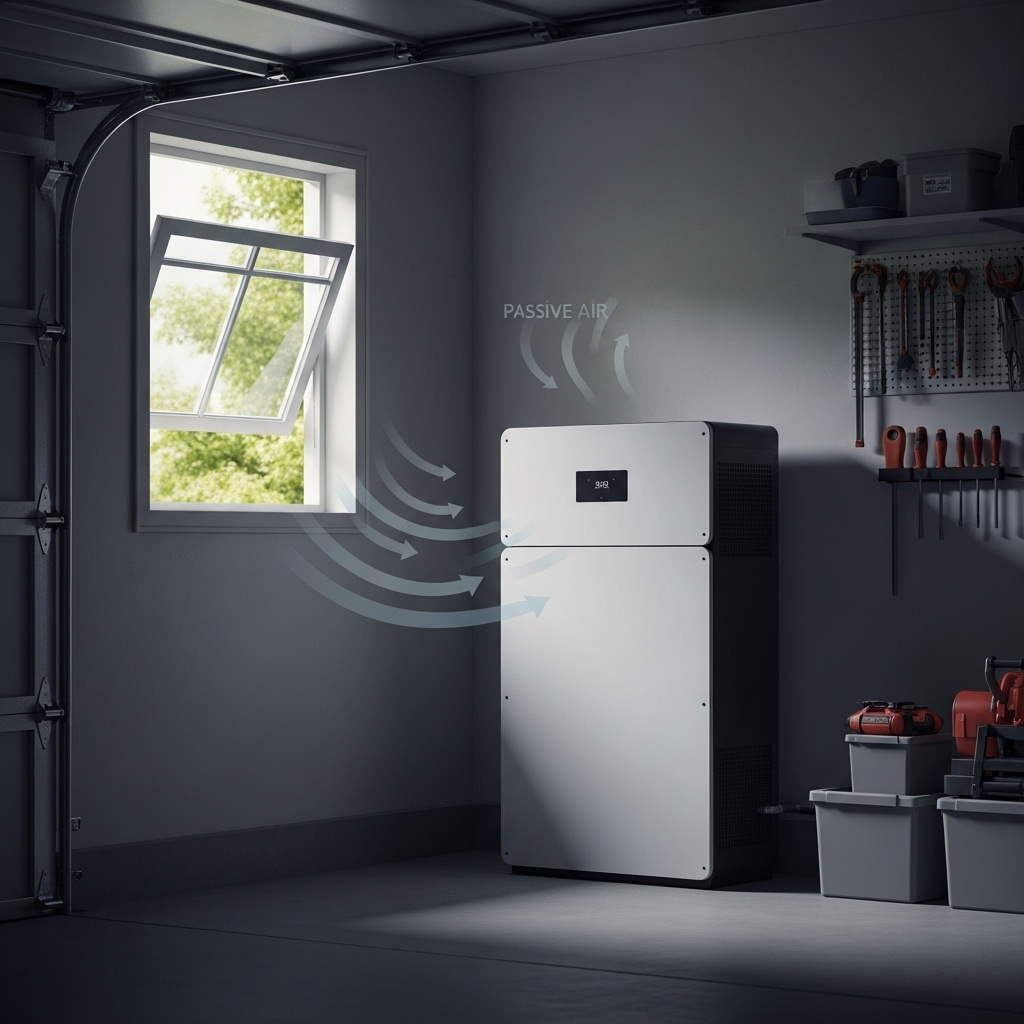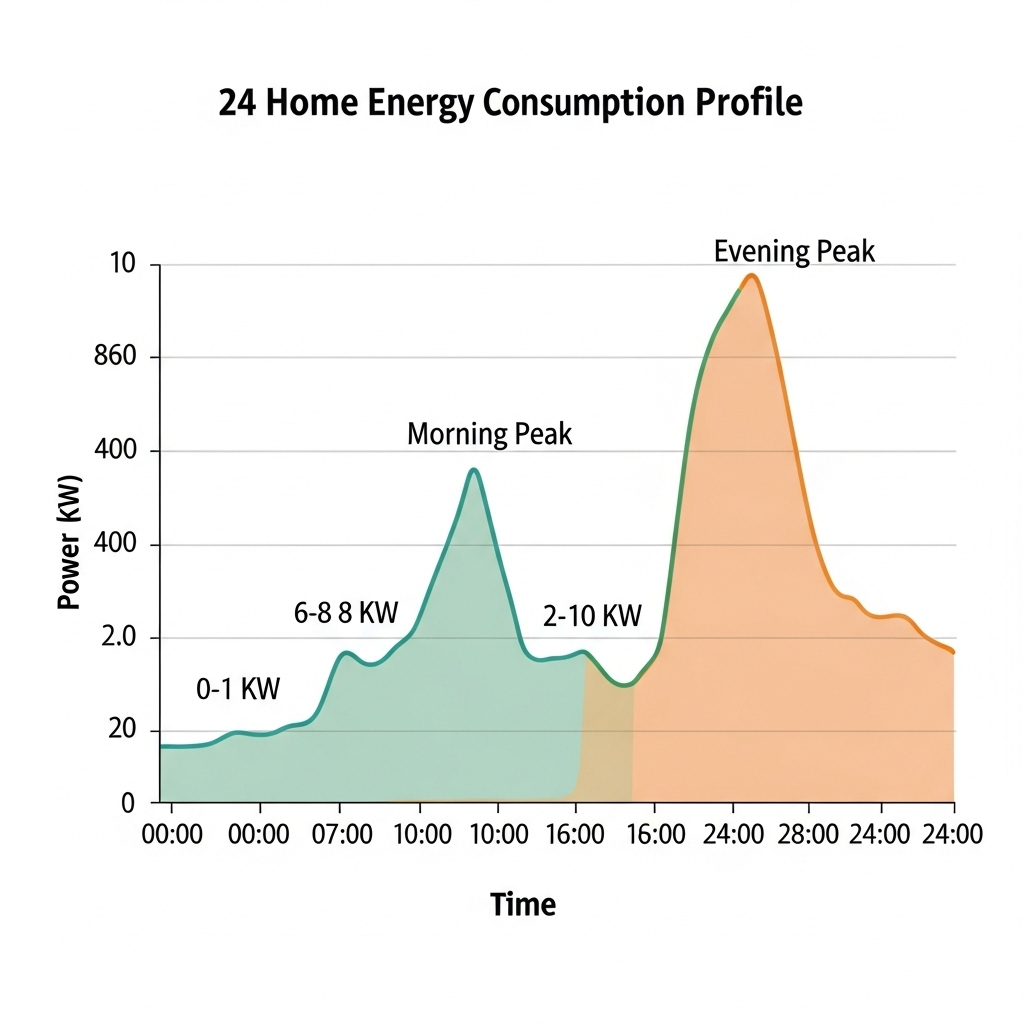A home battery system is a significant step toward energy independence. It stores solar energy for when you need it most, providing power during outages and reducing reliance on the grid. But to protect this investment, you must manage its operational environment. One of the most overlooked factors is ventilation. Proper airflow is not just a recommendation; it's essential for safety, performance, and longevity. Overlooking it can lead to overheating, which silently degrades your battery's health and capacity.
The Critical Role of Temperature in Battery Health
The chemical reactions inside a battery that store and release energy are sensitive to temperature. While designed to be robust, lithium-iron phosphate (LiFePO4) batteries have an optimal temperature range for operation. Pushing them outside this range, especially on the high end, triggers a decline in performance and accelerates aging.
How Heat Affects Performance and Lifespan
Heat is a primary adversary of battery longevity. For every 10°C (18°F) increase above its ideal operating temperature, a battery's lifespan can be reduced substantially. High temperatures increase internal resistance, forcing the battery to work harder to deliver power and causing it to heat up even more. This cycle of escalating heat can lead to irreversible damage. As detailed in the ultimate reference on solar storage performance, consistently operating a LiFePO4 battery above its recommended temperature range can significantly shorten its cycle life and reduce its overall efficiency.
Understanding Thermal Runaway
In extreme cases, excessive heat can lead to a dangerous condition called thermal runaway. This is a chain reaction where an increase in temperature causes the system to release energy, which in turn increases the temperature further, potentially leading to system failure. While LiFePO4 batteries are known for their superior thermal stability compared to other lithium-ion chemistries, poor ventilation creates an environment where the risk, though small, is needlessly elevated.
Mistake 1: Ignoring Manufacturer's Clearance Requirements
Every battery system comes with a manual specifying the minimum clearance required around the unit. This isn't just a suggestion; it's a critical design parameter for ensuring proper home energy storage thermal management.
Why Spacing Matters
The specified gaps allow for convective airflow. Cool air is drawn in from below, passes over the battery's cooling fins or surfaces to absorb heat, and then rises and exits from above. This natural process is the primary method of passive cooling. Without adequate space, this cycle is broken, and heat becomes trapped around the unit.
The Consequences of Crowding
Placing a battery too close to a wall or boxing it in without ventilation effectively suffocates it. The ambient temperature immediately surrounding the unit will climb, forcing the internal components to operate in a high-heat environment. This leads directly to reduced efficiency and a shorter operational life.
Mistake 2: Poor Location Choice
Where you install your battery is just as important as how you install it. Placing a high-performance piece of equipment in an unsuitable environment is a recipe for problems.
High-Temperature Zones to Avoid
Common installation mistakes include placing batteries in uninsulated attics, boiler rooms, or in direct sunlight. These areas can experience extreme temperature swings and consistently high ambient heat, putting constant thermal stress on your system. An ideal location maintains a stable, cool temperature year-round.
The Importance of Air Circulation
A small, stagnant space like a closet or a sealed cabinet is a poor choice for a battery. Even if the initial temperature is low, the heat generated during operation will quickly accumulate without any fresh air to carry it away. The area needs to have a source of circulating air to prevent heat buildup.
Mistake 3: Obstructed Vents and Airflow Paths
Your battery's ventilation system can only work if its air paths are clear. Over time, it's easy for these pathways to become accidentally blocked.
The Dust and Debris Problem
Dust, cobwebs, and other debris can accumulate on cooling fins and clog ventilation screens. This acts like a blanket, insulating the battery and preventing it from shedding heat effectively. A simple cleaning schedule can prevent this common cause of battery overheating.
Accidental Blockages
It's common for items to be stored around the battery system over time. Leaning tools against the unit, stacking boxes nearby, or draping a cover over it can all obstruct airflow. Maintain the designated clearance zone around your battery at all times.
Mistake 4: Inadequate Active Cooling in Demanding Environments
For many installations, passive ventilation is sufficient. However, in hotter climates or for high-usage systems, it may not be enough.
When Passive Cooling Falls Short
If your battery is installed in a location where the ambient temperature is consistently near the upper limit of its operating range, passive cooling might not be able to dissipate heat fast enough. This is often the case for systems that are heavily discharged and recharged daily. The International Energy Agency (IEA) highlights the growing need for effective cooling strategies in its report on Energy and AI, noting how thermal management is crucial for optimizing energy use in advanced systems.
Active Cooling Solutions
Active cooling involves using fans or other mechanical means to force air movement. A simple, thermostatically controlled fan can make a significant difference by pulling cool air into the enclosure and expelling hot air. These systems activate only when needed, providing an efficient solution for battery overheating prevention.
| Ventilation Practice | Description | Impact on Battery Health |
|---|---|---|
| Ideal Practice | Maintain manufacturer-specified clearances, choose a cool and dry location, keep vents clean, and use active cooling in hot climates. | Promotes optimal performance, ensures maximum lifespan, and enhances safety. |
| Poor Practice | Ignoring clearances, installing in direct sunlight or a hot attic, allowing dust to block vents, and relying only on passive cooling in extreme heat. | Leads to overheating, reduced efficiency, accelerated degradation, and increased safety risks. |
Five More Critical Errors to Avoid
Beyond the most common mistakes, several other errors can compromise your system's thermal health.
Mistake 5: Sealing the Battery in an Airtight Enclosure
In an attempt to protect the battery from dust or moisture, some users place it in a completely sealed box. This is counterproductive, as it traps all the heat generated during operation, creating an oven-like effect that will quickly degrade the battery.
Mistake 6: Forgetting Seasonal Temperature Swings
A location that seems perfect in the spring might become dangerously hot in the summer. When choosing an installation spot, you must consider the temperature profile for the entire year, not just the current season.
Mistake 7: Grouping Multiple Batteries Too Tightly
If you have a system with multiple battery packs, they each need their own clearance for ventilation. Stacking them together without adequate spacing between units causes their heat to compound, raising the temperature for the entire bank.
Mistake 8: Neglecting Heat from Other Components
The battery isn't the only component that generates heat. Inverters and charge controllers also produce significant heat. Installing these devices directly above or too close to the battery without proper ventilation can contribute to the battery's heat load.
Mistake 9: Using Improper DIY Enclosures
While a custom enclosure can be a good solution, a poorly designed one can do more harm than good. A DIY box must be engineered with proper ventilation in mind, including correctly sized intake and exhaust vents to facilitate natural convection or accommodate active cooling fans.
A Proactive Approach to Battery Health
Ensuring the longevity and performance of your home battery system starts with a solid understanding of its needs. Proper thermal management is not a feature; it's a fundamental requirement. By avoiding these nine common ventilation mistakes, you actively protect your investment. Take the time to review your current setup or carefully plan your new installation. A little attention to airflow today will pay dividends in reliable, efficient energy storage for years to come.
Frequently Asked Questions
What is the ideal operating temperature for a home battery?
Most LiFePO4 home batteries perform optimally between 15°C and 25°C (59°F to 77°F). While they can operate outside this range, doing so for extended periods, especially at higher temperatures, can reduce their lifespan.
Can I install my battery outside?
You can install a battery outside only if it is housed in a specially designed, weather-rated enclosure (e.g., NEMA 3R or higher). This enclosure must protect the unit from rain, snow, and direct sunlight while still providing the necessary ventilation to prevent overheating.
How often should I check my battery's ventilation?
It is good practice to perform a visual inspection of the ventilation paths quarterly to ensure they are not obstructed. A more thorough cleaning of any vents, screens, or cooling fins should be done at least once a year, or more often if the battery is in a dusty environment.





Leave a comment
All comments are moderated before being published.
This site is protected by hCaptcha and the hCaptcha Privacy Policy and Terms of Service apply.